School of Medicine Office of Research Newsletter
Volume 2.1 - October 2022

Message from the Vice Dean for Research
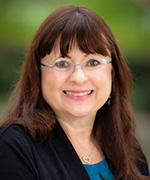
It is a pleasure to introduce our latest edition of the SOMOR newsletter, with important updates for the School of Medicine (SOM) research community. I’m particularly pleased that publication coincides with the annual celebration of Women in Medicine month. As quoted in the accompanying article, I was delighted to learn that I would have so many distinguished female colleagues when I joined UC Davis eleven months ago.
Equally impressive are accompanying data indicating that five of our current top-ten funded faculty are women. In fact, while women represent 46% of our faculty overall, they represent only 37%, 37% and 40%, respectively, of the Ladder Rank, In-Residence and Clinical X series where principal investigators are most typically found.
Among them is Angela Haczku, who since 2017 has been the Associate Dean for Translational Research for the School of Medicine. We have recently designated Haczku’s position with a new title as the Associate Dean for Research Infrastructure to reflect her responsibilities more closely. In this role, Haczku will design and develop an action plan for SOM core facilities, advise on investments from SOMOR resources, and support efforts to seek joint research training support for residents with the School of Veterinary Medicine.
We are also delighted to announce the addition of another outstanding woman to the SOMOR leadership team, with approval of Rachael Callcut’s appointment as Associate Dean for Data Science and Innovation. Callcut has already made significant contributions on an interim basis as the SOM’s first Chief Research Information Officer, a role that will be folded into her new deanship. She will play an expanded role in directing research informatics efforts and workforce development in data science. Please join me in congratulating Callcut as she assumes this pivotal position.
I’d also like to give a shout out to the Women in Medicine and Health Sciences group currently led by Melissa Bauman. The group’s efforts have significantly advanced professional opportunities for women faculty, including the recent milestone of reaching 300 female Full Professors. UC Davis School of Medicine can only thrive with full and equitable participation of all groups. Indeed, a study by Yang et al. recently published in the Proceedings of the National Academy of Sciences examined 6.6 million papers published across all medical sciences since 2000 and concluded that author teams exhibiting gender diversity published work that was both more novel and more impactful. Further, while the fraction of publications produced by mixed gender teams has grown rapidly, such teams continue to be underrepresented compared to the numbers of men and women in the field.
These interesting findings should persuade us to re-double our efforts to support the careers of our female colleagues, not only because it is the right thing to do, but also as a strategy to further strengthen the impact that research from UC Davis School of Medicine will have on the future of biomedical science.
Kim E. Barrett
Vice Dean for Research
School of Medicine
Distinguished Professor of Physiology and Membrane Biology
Extramural Funding Updates - Celebrating our success in 2022
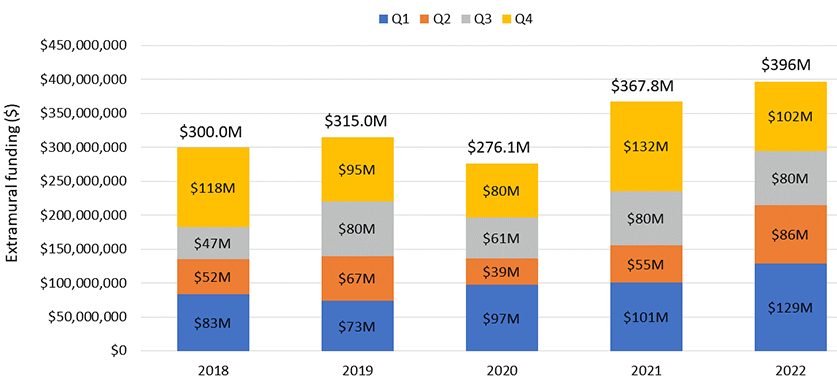
UC Davis reached a major milestone in fiscal year 2021-22, attracting $1.07 billion in external research funding, up by $102.9 million from the previous record set last year. In doing so, UC Davis joins an exclusive group of fewer than 20 public universities in the nation surpassing $1 billion in research funding. A primary contributor to this success was the School of Medicine, which achieved $396 million in extramural funding for the year, a record for the school, as well as the largest contribution to the UC Davis total.
School of Medicine Research Celebration 2022
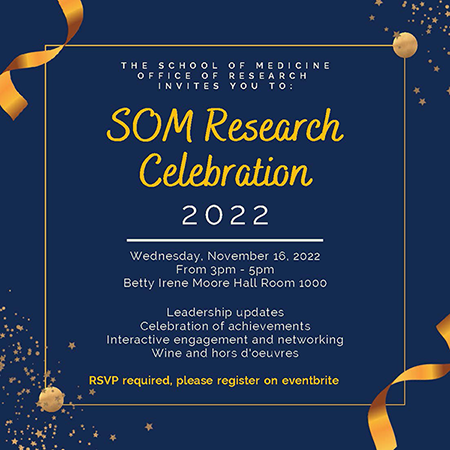
Celebrate with us!
We are thrilled to announce the return of the annual Research Celebration in time to mark this incredible year of achievements. Please join us in celebration at Betty Irene Moore Hall (BIMH) in Sacramento on Wednesday, November 16, from 3-5 p.m.
The event will open with Vice Chancellor for Research Prasant Mohapatra and School of Medicine Vice Dean for Research Kim E. Barrett. It will feature short presentations on trailblazing work by our School of Medicine researchers. There will be ample time to socialize with colleagues and learn about the many ways our office of research supports investigators. Wine and hors d’oeuvres will be served.
We hope you celebrate with us this year. As RSVP is required, please register through Eventbrite.
Show us your work! We would like to see and share images of research teams as part of the celebration. If you have any pictures of yourself or your team, please send to somor@ucdavis.edu for inclusion in our research celebration presentation. We look forward to seeing you!
Recognition
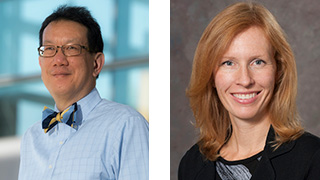 A UC Davis team led by Ted Wun, associate dean for research in the School of Medicine, and internal medicine professor Theresa Keegan has been awarded a $15.7 million grant renewal to manage the California Cancer Registry. UC Davis has been awarded the three-year grant to manage this registry by the California Department of Public Health. The UC Davis team will provide statewide surveillance and IT functions to the registry, as well as collaborate with regional registries and support national cancer initiatives.
A UC Davis team led by Ted Wun, associate dean for research in the School of Medicine, and internal medicine professor Theresa Keegan has been awarded a $15.7 million grant renewal to manage the California Cancer Registry. UC Davis has been awarded the three-year grant to manage this registry by the California Department of Public Health. The UC Davis team will provide statewide surveillance and IT functions to the registry, as well as collaborate with regional registries and support national cancer initiatives.
Get to Know SOMOR - Space Unit
“The demand for research space is unrelenting, if not insatiable.” - 2021 UC Davis Health School of Medicine Research Plan
The Research Space Oversight unit, under the School of Medicine Office of Research (SOMOR), oversees the completion of School of Medicine (SOM) research space assessments, allocations, and provides recommendations regarding current and future research facilities. A key accomplishment completed in January of 2021 was the UC Davis Health School of Medicine Research Space Plan (UCDH SOM RSP) report. The UCDH SOM RSP study was a cross-campus collaborative effort to understand the space needs for the research programs on both the Sacramento and Davis Campuses. UCDH leadership and stakeholders worked with a consultant to generate the plan in alignment with the overall SOM strategic growth plan. Members of the Research Space Oversight unit were key members of a task force that catalogued current space resources and identified anticipated needs for the future. A primary goal of the UCD SOM research strategy is to rise in the Blue Ridge (NIH Grant Funding) rankings. SOM projects that this goal will require a net increase of an additional 100 NIH-funded researchers. It will also require the space needed to be competitive for the increased grant funding. The SOM vision for research space is to build a top-tier collaborative research work environment to attract and retain world class researchers in order to be recognized nationally and internationally.
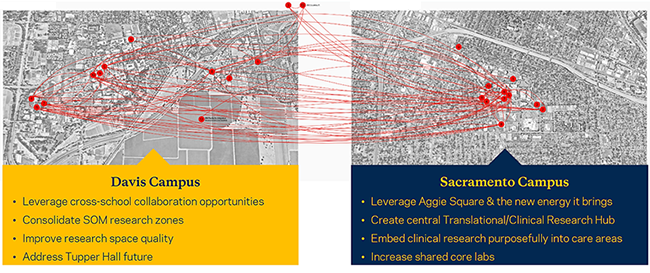
Image © NBBJ Consulting
The Research Space Plan defined current state and projected growth by research division in the Sacramento and Davis campuses and provided recommendations that include an implementation schedule with capital outlay for strategic financial planning purposes. In addition, this project developed a robust dashboard prototype for more in-depth space utilization information to increase transparency and improve overall oversight and management of research space. The next steps in this process will include:
- Creation of a multi-faceted inclusive Space Advisory Committee (Davis/Sacramento campuses)
- Recommended space policy updates for research definition/differentiation/oversight (per UCOP guidelines)
- Improved transparency in space planning and management in Sacramento and Davis
- Development of a strategic School of Medicine capital plan to address short/mid/long-term research facility needs that include renovations of existing research buildings that tie into the UC Davis Health Long Range Development Plan (LRDP)
- Completion of a space audit of all School of Medicine research space and complete the space dashboard
SOMOR’s Research Space Oversight unit will continue to collaboratively support these vital efforts.
Research Space Oversight Unit
Shawn Rasmussen
Director of Facilities and Space
serasmussen@ucdavis.edu
Tammi Olineka
Associate Director of Facilities and Safety
tlolineka@ucdavis.edu
Lilly Greatorex
Space Analyst
lgreatorex@ucdavis.edu
https://health.ucdavis.edu/medresearch/space/
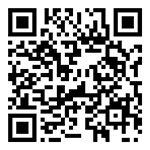
Breast Cancer Awareness Month
Breast cancer is second only to lung cancer as a cause of cancer death in American women. An estimated 265,000 new cases of invasive breast cancer are diagnosed each year.
The UC Davis Breast Cancer Program provides comprehensive, multidisciplinary care for patients with all stages of breast cancer. The Breast Cancer Program is part of the UC Davis Comprehensive Cancer Center, which means that patients have access to numerous clinical trials of new innovative therapies, as well as world-class care.
Breast cancer research at UC Davis includes:
- Several studies on experimental treatments led by Breast Cancer Program director Helen Chew;
- Text and phone counseling for breast cancer patients by surgical oncologist Richard Bold; and
- A study on personalized chemotherapy options by assistant professor Mili Arora.
- New projects in breast cancer research targeting marginalized populations, led by Diana Miglioretti and Luis Carvajal-Carmona
Breast Cancer Resources
Feature: Women in Medicine
September is Women in Medicine Month, a time to reflect on the successes, triumphs - and challenges - of women in the field of medicine.
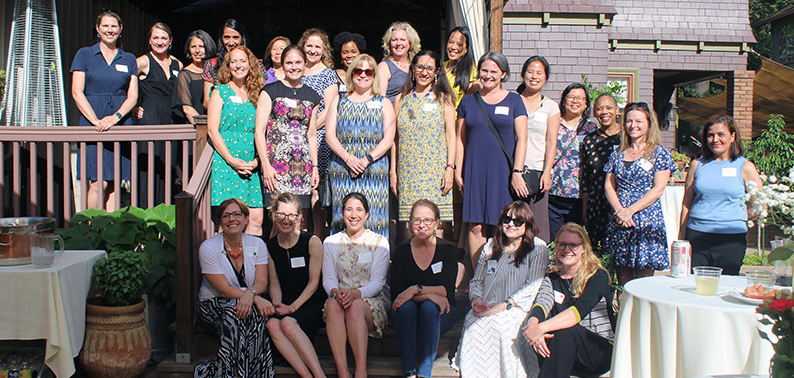
UC Davis Women in Medicine and Health Sciences group is a valuable resource for female health professionals at UC Davis.
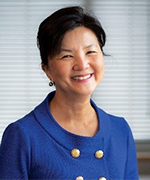 Yu-Jui Yvonne Wan, Ph.D.
Yu-Jui Yvonne Wan, Ph.D.
In addition to her many other responsibilities, Department of Pathology and Laboratory Medicine Vice Chair for Research Yvonne Wan is a dedicated mentor to junior colleagues. She has worked hard to support her mentees, including hiring post-docs as project scientists so that they can continue to work in her lab, and finding the means to support a mentee during her time off for pregnancies. This took effort and creativity to pull off but was worth it to avoid disruption in the lab. Wan considers continuity to be one of the primary keys to successful research. “You can’t take gap years in science. But perseverance is another of those keys,” she adds. “It’s like a marriage. During hard times, I still support you.”
Work-life balance challenges can hit particularly hard on women in the sciences, as she knows. Researchers rely on grants to survive, but it can be difficult to manage when you are balancing childcare and/or elder care with research, publishing, and writing grants. It is likewise difficult to be a mentor, no matter your gender, Wan adds. It takes an enormous individual effort to support just one mentee – financial and often overwhelming time commitments. Her department supports female scientists and makes an effort to recruit and retain them, but it remains a struggle.
In March, Victoria Dimitriades, professor in the Department of Pediatrics, was first author on an article examining the persistent gender gaps within the Clinical Immunology Society membership and providing some suggestions for reducing it and encouraging, retaining and promoting female membership in the field of immunology.
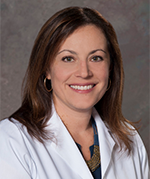 Victoria Dimitriades, M.D.
Victoria Dimitriades, M.D.
As part of their study, Dimitriades and her co-writers noted that the issues leading to gender disparities in this field mirrored disparities across academic science. Lack of accommodations for work-life balance, lack of female mentorship and lack of ability to get grant funding were noted barriers to women in the sciences. Dimitriades’ team initiated several programs within their scientific society in order to address the gender gap in the field, including the development of programs to target education, mentorship, culture and resilience, and leadership/faculty development.
Dimitriades cites a group of researchers at UC Davis who have tackled this topic in creating the UC Davis Women in Medicine and Health Sciences (WIMHS) group: professors Melissa Bauman, Lydia Howell and Amparo Villablanca. “They are the initiators of this movement on the campus and continue to be instrumental in promoting both main campus and health campus women in their careers,” Dimitriades says.
One promising area of system-wide improvement to work on is in the arena of academic publishing. Challenges to women in publishing their studies is one of the larger barriers for progressing in scientific fields. The proportion of female first and last authors in high profile research journals remains substantially lower than male authors, and progression is incredibly slow: there is an annual 1% increase of female representation as first or last authors in high impact journals. This is an unwarranted drag on the careers of many female scientists, as reported in 2021 in Science, which published a comprehensive study looking at the gender gap in authorship with an in-depth look at its impact on retention of women in the sciences:
“Science has a hard time retaining women. Despite higher rates of matriculation, women are not advancing through the academic career path at the same rate as men. Women are also underrepresented in scientific production generally and in dominant author positions specifically and do not receive equal treatment in peer review. Since scientific authorship in scholarly publications is a central mechanism to distribute credit for research, it has an important determinant in career progression in which publications and subsequent citations serve as symbolic capital in the scientific community.”
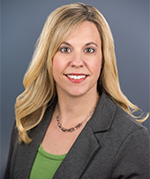 Crystal Ripplinger, Ph.D.
Crystal Ripplinger, Ph.D.
Crystal Ripplinger, vice chair for research in the Department of Pharmacology, says that much can be done to address this issue. Recruiting women to editorial boards and peer review committees is one step; another is increasing gender parity in the position that makes decisions about what goes into a given journal issue – sometimes a single associate editor decides what to recommend for inclusion into a journal.
Ripplinger is part of the effort to improve the publishing culture. As an editor for the American Journal of Physiology – Heart and Circulator Physiology, she was part of the team that instituted gender and other equity changes to the journal’s consulting editorship in 2021. This sort of action is a potential step in dispersing one aspect of the Matilda Effect in academic publishing. This is a circular phenomenon in which women are less likely to be included in higher impact publications, and therefore their work continues to be undervalued, reinforcing the stereotype that precludes them from appearing in high impact publications.
But as another recent female recruit to UC Davis School of Medicine, Kim Barrett, Vice Dean for Research, notes, we also have much to celebrate. “I was thrilled to find myself amongst so many impressive women leaders in my new position. From our interim Dean, Susan Murin, to department chairs and notable research superstars, women are having a huge impact on our prominence as an institution. The accomplishments of women amongst our faculty and trainees suggests an opportunity to overcome the hurdles that have previously impeded careers.”

Feature: California Umbilical Cord Blood Collection Program

A researcher in Southern California is investigating the increased risk of occurrence of acute lymphoblastic leukemia (ALL) in Hispanic/Latino children. He is tackling this problem by studying the effects of germline genetic variation on blood cell development in the Hispanic/Latino population. However, he has run into a substantial roadblock.
“We were hoping to obtain cord blood specimens from Hispanic/Latino babies born at a local hospital,” explains Adam de Smith, assistant professor of population and public health sciences at Keck School of Medicine of USC, “but, due to administrative delays and restrictions caused by the COVID-19 pandemic, it became clear that this would not work within the timeframe of our project.” Fortunately, de Smith found a solution at UC Davis. “Earlier this year, we were very happy to discover an alternative source of cord blood specimens for research use in California - the California Umbilical Cord Blood Collection Program [CA-UCBCP] and its affiliated cord blood banks.”
UC Davis is a recognized leader in the field of stem cell research. Professor Jan Nolta leads the Institute for Regenerative Cures at UC Davis, a center for physicians, research scientists, biomedical engineers and a range of other experts to collaborate on cutting-edge research on stem cell therapies. CA-UCBCP is housed under the Institute for Regenerative Cures. This statewide program is administered at UC Davis Health by director Suzanne Pontow, who oversees the collection of cord blood units for public banking and transplantation.
In participating hospitals located throughout the state, placental and umbilical blood is collected after the birth of a baby, and banked for clinical use, as an alternative to bone marrow or stem cell transplants. If it does not meet minimum criteria for clinical use, cord blood can be made available to investigators for a broad range of research, including Dr. de Smith’s research on ALL, an acute (rapid-developing) cancer of the blood that is the most common cancer in children. “We have been receiving cord blood units specifically from Hispanic/Latino newborns from this program for several months. These valuable biospecimens will enable us to achieve the aims of our study, which we hope will shed light on the causes of childhood ALL.”
The CA-UCBCP plays an important role in treatment and research – and this is due in large part to the diversity of its collection. Bone marrow and stem cell transplants are important - and still the gold standard - treatments for diseases such as acute and chronic leukemia, aplastic and sickle cell anemia, Hodgkin’s and non-Hodgkin’s lymphoma, immune deficiencies and plasma cell disorders. However, these transplants can involve a trickier match process than other types. It is not as simple as finding a matching blood type – a successful bone marrow or stem cell donation involves the matching of human leukocyte antigens (HLAs), proteins we inherit, in potentially thousands of variable combinations, from both parents. Doctors try to match these antigens when finding a donor for a person getting a stem cell transplant. How well the donor’s and recipient’s HLA tissue match plays a large part in whether the transplant will be successful. Patients with successful matches have a lower chance of experiencing graft-versus-host disease, graft rejection, a weakened immune system, or serious infections. The difficulty is that even siblings with the same two parents might inherit different pairs of HLAs - there is only about a 25% chance of even your closest genetic relative being a good match for bone marrow transplantation. At that point, you need to look to the community for a match.
This is where cord blood comes into play. Blood extracted from the placenta and umbilical cord after a birth contains all the natural elements of blood and is also rich in blood-forming stem cells. These are similar to those found in the bone marrow, but do not require as close a match between the donor and recipient, so it can be easier to find a cord blood match for the patient in need of a transplant.
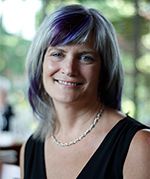 Suzanne Pontow, Ph.D.
Suzanne Pontow, Ph.D.
As director Suzanne Pontow explains, the CA-UCBCP takes particular care to make sure that the cord blood inventory is as diverse as the state’s population. “California is the second most diverse state in the United States, including many residents who are multi-racial, which makes it more likely that patients needing bone marrow transplants will have difficulty finding a traditional match.” By targeting high-birthrate hospitals with diverse patient populations, the CA-UCBCP has created an inventory of cord blood that is more targeted to those who might need it most – and not just throughout California. The diversity of the CA-UCBCP inventory allows it to be of substantial benefit beyond the region, state and even the US, both for therapeutic and investigative purposes.
Lydia Sotelo, community health program representative for the CA-UCBCP, adds that it is important to have a ready group of researchers approved to use the research cord blood. “If we do not have researchers available to accept the cord blood that meets the criteria for research, it would be discarded as medical waste. The more researchers we have vetted to receive cord blood for research the less chance there is that any will be discarded. Our Cord Blood collectors work diligently to collect this valuable resource and mothers are typically excited to participate, so we always take it to heart when a unit gets discarded.”
Any researchers interested in using umbilical cord blood for research should contact Lydia Sotelo at ucbcp@ucdavis.edu or 844-734-CORD (2673). For more information on the California Umbilical Cord Blood Collection Program for researchers, go here.
Global reach of UCBCP
“Seventy-five percent of the transplants from our CA inventory have been outside of California,” says CA-UCBCP director Suzanne Pontow. “And twenty percent of those have been international transplants.” So far, cord blood collected under the CA-UCBCP has been provided for transplants in to five countries outside the US as well as to 22 states in the U.S.
Diversity Matters
Human Leukocyte Allele (HLA) pair matching is a must for successful stem cell and bone marrow transplantations. Matching is more difficult for patients with rarer alleles. Because they are passed down generationally, HLAs are strongly associated with one’s ethnic background, which makes finding a match difficult if there is a smaller number of people among whom to search.
This is especially true for people with a diverse background, who have received these proteins from two or more disparate ethnic inheritances; in these instances, the chance for a match starts to become vanishingly small. The availability of cord blood, especially from a broad spectrum of sources, helps to increase the odds.
California’s UCBCP highly diverse inventory of cord blood is approximately 80% from ethnic backgrounds other than non-Hispanic white (compared to the national average of 40%). Inventory usage reflects this diversity with over 80% of 83 transplants provided from diverse donations.
